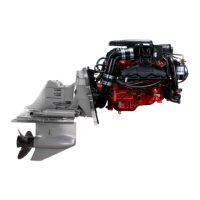What to do if my Volvo Penta Engine won't start?
- OodunnAug 6, 2025
If your Volvo Penta Engine won't start, several factors could be at play. First, ensure there's fuel in the tank and the petrol shutoff valve is open; if not, fill the tank or open the valve. Water contamination or old petrol can also prevent starting, so check the fuel supply, drain the tank if needed, flush with fresh petrol, and replace the fuel filters. Also, check the battery and cable connections for looseness or corrosion, clean them, and recharge the battery. Finally, ensure the remote control is in the NEUTRAL position.


